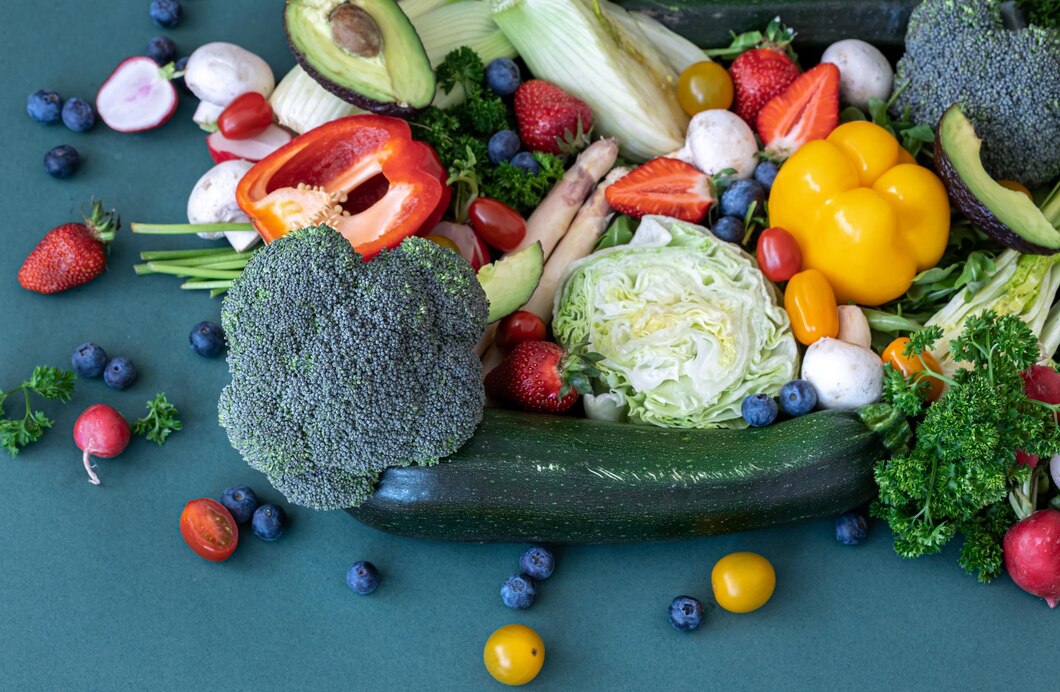One of the easiest ways to improve your overall health is by incorporating more fruits and vegetables into your diet. The health benefits are numerous—eating enough produce can lower your risk of heart disease, boost brain health, and provide a range of essential nutrients for your body. The U.S. Department of Agriculture (USDA) recommends consuming 400 grams of produce each day, which equals approximately 5 servings (2 cups of fruit and 3 cups of vegetables).
But does it matter if your fruits and vegetables are organic or conventional? While eating more produce—whether organic or conventional—is beneficial, some people are concerned about pesticide residues on non-organic options. If you’re among those who are wary of pesticides but want to stick to a budget, it helps to understand the differences between organic and conventional produce.
The Impact of Pesticides on Health
According to the Environmental Working Group (EWG), which publishes an annual Shopper’s Guide to Pesticides in Produce, many conventionally grown fruits and vegetables contain pesticide residues. However, the USDA and the Food and Drug Administration (FDA) have strict guidelines to ensure that the levels of pesticides found on produce are within safety limits. More than 99% of the foods sampled by the USDA in 2022 had pesticide levels below the Environmental Protection Agency’s (EPA) tolerance levels, which means they are generally considered safe to eat.
Yet, if you are still concerned about pesticides, you can make informed choices. The EWG provides two key lists: the Dirty Dozen and the Clean Fifteen. The Dirty Dozen highlights the fruits and vegetables that typically have the highest pesticide residues, while the Clean Fifteen lists produce items with the lowest pesticide levels. If organic options are too expensive, the EWG suggests prioritizing organic versions of the items on the Dirty Dozen list, and opting for conventional produce from the Clean Fifteen.
The Dirty Dozen: Top Offenders
Here are the 12 items with the most pesticide residues, according to the 2024 EWG report:
- Strawberries: Almost all strawberries tested had pesticide residues, with 30% containing multiple pesticides.
- Spinach: Spinach contains high levels of pesticide residue by weight. Many samples tested positive for permethrin, a neurotoxin.
- Kale, Collards, and Mustard Greens: These greens had a variety of pesticide residues, with a significant portion of kale containing DCPA, which the EPA considers a possible carcinogen.
- Grapes: Over 90% of conventional grapes tested had multiple pesticide residues.
- Peaches: Nearly all conventional peach samples contained pesticide residues.
- Pears: More than half of pear samples tested positive for five or more pesticides.
- Nectarines: Over 90% of conventional nectarines had multiple pesticide residues.
- Apples: Similar to nectarines, more than 90% of apples tested had pesticide residues.
- Bell Peppers and Hot Peppers: More than 100 types of pesticides were found on peppers, making them one of the most contaminated produce items.
- Cherries: Over 90% of cherries tested positive for pesticide residues.
- Blueberries: Nine out of ten samples contained pesticide residues, with many having more than two types.
- Green Beans: Similar to blueberries, most green bean samples had multiple pesticide residues.
The Clean Fifteen: The Safest Produce
On the other hand, the Clean Fifteen lists fruits and vegetables with the least pesticide contamination. These include:
- Avocados
- Sweet Corn
- Pineapples
- Onions
- Papayas
- Frozen Sweet Peas
- Eggplant
- Asparagus
These items are considered safe choices when shopping for conventional produce.
Should You Buy Organic?
While buying organic can help minimize your exposure to pesticide residues, it’s not necessary to exclusively purchase organic fruits and vegetables. The most important thing is to eat a variety of fruits and vegetables to improve your health, regardless of whether they are organic or conventional.
If your budget is tight but you still prefer organic, focus on the Dirty Dozen and prioritize those items. For the Clean Fifteen, conventional options are perfectly fine. By following this strategy, you can maintain a balanced and healthy diet without overspending.
Incorporating more fruits and vegetables into your diet is one of the best things you can do for your health. Whether you choose organic or conventional produce, the key is to eat a variety of fruits and vegetables daily. If pesticide concerns are on your mind, the EWG’s Shopper’s Guide is a helpful resource to make informed decisions, allowing you to prioritize organic produce where it matters most. Ultimately, more produce is better, so don’t let pesticide fears stop you from reaping the benefits of a plant-rich diet.








